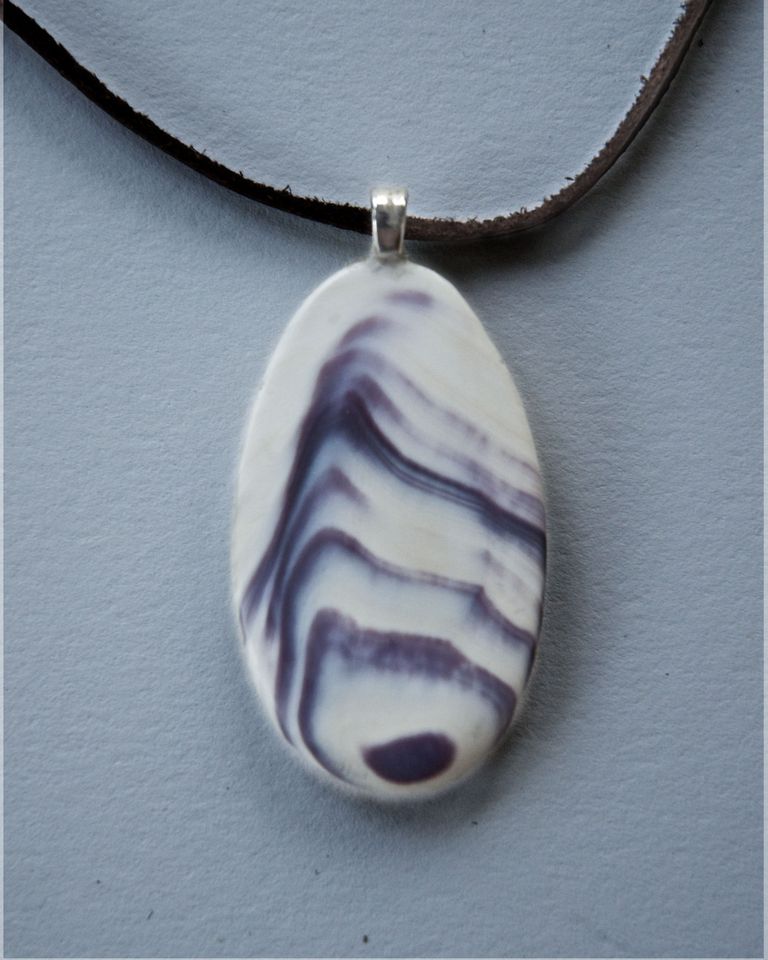Local Hamptons Artist Embraces Ancient Craft

In a way, 65-year old Fred Brandes, who lives in Springs and is on his third or fourth incarnation as a an artist-craftsman, could well be regarded as an art work himself, a tall, lanky sculpture with striking facial features, prominent nose and high-arched eyebrows. The look suggests reserve, but the immediate greeting is friendly, the manner casual, the comments forthcoming, especially when he allows that he’s always been unconventional, a maverick—“It was the ’60s, you know,” he says with a grin.
His modest house and nearby studio bear witness to his several artistic lives—a representational muted color still life done under the eye of a beloved teacher at Cooper Union years ago; large abstracts he calls “weave color” paintings—flat-paint curved stripes built up in layers of thin stain, followed by applications of pigment that create a three-dimensional effect; wall relief grid designs in wood and tables with shells. He once made a chair for Cyril Fitzsimmon’s of Cyril’s Fish House for his 65th birthday, which contained “over 30 inlaid nickel-sized wampum coins.” One such table belongs to Kelly Ripa who “talked about it on the air.” Other clients have included Leo Castelli, Elaine Stritch, Chuck Close, Robert Rauschenburg, John Chamberlain, Sidney Lumet, Liev Schreiber and Naomi Watts.
His extensive bio lists awards—an alumni scholarship from Cooper, from which he received a BFA in 1969 and a National Endowment of the Arts Fellowship; commissions from, among others, Chase, Citicorp, Prudential, Marathon Oil; and group and solo exhibitions, including years of the Springs Invitational and Guild Hall Member Shows. He’s been in numerous East End galleries (and played in the East Hampton Artists and Writers game), and his designs have been noted in New York Magazine, The New York Times and Architectural Digest. At one time he worked on a “mobile art and film program” for the New York City Department of Cultural Affairs and designed a series of “sculptural wood toys” that were featured at The Louvre, the Albright–Knox Gallery and the San Francisco Museum of Art. He did and still does custom woodwork for Manhattan-based galleries, museums and artists and has had showings at ICFF (International Contemporary Furniture Fair). He’s particularly pleased to be exhibiting his shells at high-end trade shows, such as the American Concern for Art and Craftsmanship Crafts Festival at Lincoln Center.
He only recently succumbed to the computer, where the website etsy.com features his designs with quahog clam shells (he won’t name the beaches where he gets them, he coyly says), but he does delight in showing a visitor the stages in the process of making shells into beautiful jewelry. “There needs to be enough thickness to flatten and shape the desirable part,” to start with. Then he rough shapes by sawing and grinding, using various files and four to five grades of sandpaper, and finally buffs into polished stone “with denim from old blue jeans.” Elbow grease, he says, “always gives better results than power.” He describes transforming clamshells into gems as “addictive.” Clearly, “art and artistry” have always been his calling. His passion now turns on creating Fibonacci spirals with shells, designs that reflect “the golden spiral,” which gets wider, as it moves further from its origin. “Who knew Fibonacci,” Brandes says, with disarming honesty, but, of course, he’s delighted to learn that what he had been innocently intuiting was a mathematical formula that went back to the 13th century.
His meticulous work these days is particularly significant considering a shocking event that overtook his life some years ago. While working on a major architectural project at the Castelli Gallery, he had a horrific accident, severing four fingers of his right hand (he is left-handed). It goes without saying that a difficult personal and professional period followed.
It’s all the more remarkable, therefore, that he continues doing what he loves as an artisan and doing it his own way.



